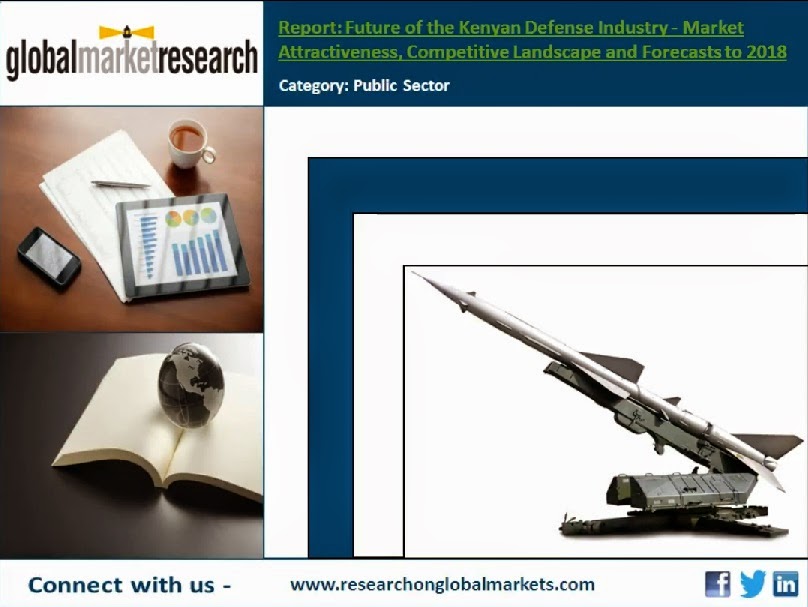This report is the result of SDIs extensive market and company research covering the Saudi Arabian defense industry, and provides detailed analysis of both historic and forecast defense industry values including key growth stimulators, analysis of the leading companies in the industry, and key news.
Scope
* The report provides detailed analysis of the current industry size and growth expectations from 2014 to 2018, including highlights of key growth stimulators, and also benchmarks the industry against key global markets and provides a detailed understanding of emerging opportunities in specific areas.
* The report includes trend analysis of imports and exports, together with their implications and impact on the Saudi Arabian defense industry.
* The report covers five forces analysis to identify various power centers in the industry and how these are expected to develop in the future.
* The report allows readers to identify possible ways to enter the market, together with detailed descriptions of how existing companies have entered the market, including key contracts, alliances, and strategic initiatives.
* The report helps the reader to understand the competitive landscape of the defense industry in Saudi Arabia. It provides an overview of key defense companies, both domestic and foreign, together with insights such as key alliances, strategic initiatives, and a brief financial analysis.
Reasons to Buy
Bribery and corruption have been prevalent in Saudi defense procurement for many years, largely due to the monopolistic status exercised by the government over the purchase decisions of its armed forces. According to Transparency International, Saudi Arabia has insufficient safeguards against corruption in the defense industry. For example, corruption charges were leveled against a unit of EADS UK with regards to US$3.3 billion communication contract and being investigated by the UK Serious Fraud Office over bribery allegations in the country.
Foreign investors may be deterred from entering the Saudi Arabian defense market because of scarcity of skilled labor, induced by the lack of industrial capabilities within the country. Nitaqat law makes it mandatory for the companies to have a minimum of 10% local employees and scarcity of skilled labor complicates the business environment for foreign companies. Although the government is focusing on making amendments, the non-employment rate has increased in recent years resulting in internal conflicts adding to the foreign companies woes.
Key Highlights
The Saudi Arabian governments’ hopes of strengthening its defense infrastructure in order to emerge as the most powerful nation in the Middle East have been supported by many years of high oil prices and strong economic growth. Strained relationship with Iran: The rivalry between Saudi Arabia and Iran in the Middle East is a regional power struggle for influence, in which both sides have aimed at steering the course of events, shaping developments, and influencing decisions in the region according to their political preferences and interests. Over the past few months, relations between Saudi Arabia and Iran have been mired in tensions which are rooted in the Arab revolutions and Saudi Arabia's support of the West's sanctions against Iran. As a result of the Arab Spring, Saudi Arabia has lost the support of Egypt, its main ally in its leadership of the anti-Iran camp. Iran has also lost its main ally, Syria, which is currently fighting for its survival amid the wave of protests sweeping the country. The difference between the Iranian and the Saudi approaches to the events in Syria is worsening the tension between them. In addition, Saudi Arabia is deeply concerned about Irans growing infiltration of Iraq, especially following the withdrawal of American troops from that country. In an effort to counter Irans influence, the Saudi government has increased its focus on developing technologically superior military capabilities.
Saudi Arabia’s homeland security market is being largely driven by increasing security threats, such as insurgents from Yemen, domestic terror groups, jihadists from Iraq, and its volatile relationship with Iran. The increasing incidence of Al-Qaeda training camps and domestic instability, due to the royal family’s perceived disregard for traditional Muslim customs, further intensify domestic instability. Moreover, the nation’s socio-economic situation adversely affects homeland security. Factors such as high unemployment rate, which stood at 12.1% in 2012, the rising level of poverty, and a lack of balanced economic development, all contribute to the growing prevalence of terrorism within the country. Given the chaos that the Middle East experienced over the past few years, especially with respect to the current civil war in Syria, the increasing activities of Islamic fundamentalist groups in countries such as Yemen, and the on-going insurgency related conflicts in Iraq, it is imperative for Saudi Arabia to strengthen its internal security forces to contain any potential threat within its territory.
The lack of a well-established defense industry forces Saudi Arabia to rely on imports from foreign companies. During 2008-2012, the country’s defense imports increased significantly, peaking in 2011. Aircraft dominated the imports during this period, which the US and the UK being the preferred sources. Major contracts signed during 2011-2012 will drive the country’s imports over the forecast period, which is expected to see the similar trend. Aircraft accounted for 51.8% of total defense equipment imports by the country during 2008-2012 and Saudi Arabia is expected to follow the same trend over 2013-2017.
To order this report:
Email: support@researchonsaudiarabia.com
US: +1 800 986 6819
UK: +44 203 514 2363
India: +91 22 4098 7600
SOURCE: Researchonsaudiarabia.com
RELATED LINK:
Future of the Saudi Arabian Defense Industry - Market Attractiveness, Competitive Landscape and Forecasts to 2018
RELATED VIDEO:

